 W
WAughinish Tower is a Martello tower at Aughinish, County Clare, Ireland. It was built as a signal and gun tower to defend Ireland against invasion by the French during the Napoleonic Wars.
 W
WBalbriggan is a town 34 km from Dublin in the northern part of Fingal, Ireland. The 2016 census population was 21,722 for Balbriggan and its environs.
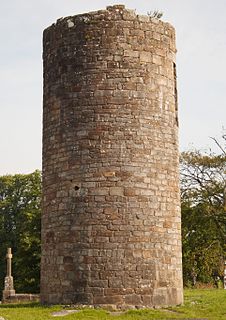 W
WBalla Round Tower is an Irish round tower and National Monument located in County Mayo, Ireland.
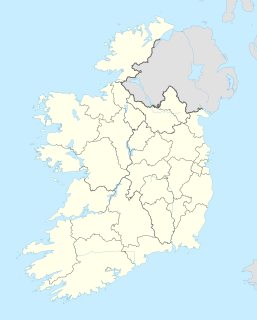 W
WBallyduff is a village near Listowel, County Kerry, Ireland. Located on R551 between Ballyheigue and Ballybunion on hills above Cashen Bay where the River Feale flows to the sea at the mouth of the River Shannon.
 W
WThe Beach Tower located in Jenkins Lane car park, Waterford is a 15th century crenelated building which is part of the city defences. It was built on a rocky outcrop overlooking the River Suir and forms a natural defensive position.
 W
WBray Tower is located on Valentia Island, County Kerry. The tower was built by the occupying English forces in 1815 in the fashion of a 16th-century Irish tower house.
 W
WBray is a coastal town in north County Wicklow, Ireland. It is situated about 20 km (12 mi) south of Dublin city centre on the east coast. It has a population of 32,600 making it the ninth largest urban area within Ireland.
 W
WCarrickgollogan is a hill in Dún Laoghaire-Rathdown in Ireland. It is 276 metres high and rises above the village of Shankill on the eastern edge of the Dublin Mountains. Its summit is noted for the panoramic views it offers of south Dublin and north Wicklow.
 W
WCastledermot Round Tower is a 10th-century round tower in Castledermot, County Kildare, Ireland. The tower, and the high crosses nearby, are a National Monument.
 W
WClondalkin is a suburban town situated 10 km south-west of Dublin city centre, Ireland, under the administrative jurisdiction of South Dublin. It features an eighth-century round tower that acts as a focal point for the area. Clondalkin forms part of the Dublin Mid-West Dáil constituency and its postal code is Dublin 22.
 W
WClondalkin Round Tower is an Irish round tower or cloigtheach founded by Saint Mochua, also known as Saint Cronan, and located in Clondalkin, South Dublin, Ireland. It is now a National Monument of Ireland. It's also become a museum that houses a cafe.
 W
WCloyne Round Tower is a round tower in the historically monastic town of Cloyne, County Cork in Ireland. Cloyne was also the "see city" of the Anglican Diocese of Cork, Cloyne and Ross. The tower is a symbol for the town of Cloyne.
 W
WCorr Castle is an L-plan tower house likely constructed sometime in the fifteenth century in Sutton, Dublin. The castle lies within the boundaries of Howth Demesne in the old townland of Correston, close to the townlands of Quarry and Burrow. The castle was probably built on higher ground in order to guard the isthmus at Sutton which was the only route on land to access Howth Castle and the port of Howth. It has historically sometimes been called The Dane's castle.
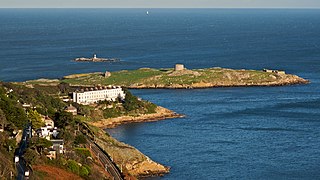 W
WDalkey Island is an island for which the nearby village of Dalkey is named. It is an uninhabited island located c. 16 km (9.9 mi) south of Dublin and 3 km (1.9 mi) south of Dún Laoghaire harbour. An important site of pilgrimage for centuries, it has been known as "St Begnet's Isle" since records began. The earliest reference to 'Dalkey Island' is from c. 1782. The island had a population of 8 in 1841.
 W
WDísert Óengusa [ˈdʲiːʃəɾˠt̪ˠ ˈeːŋɡəsˠə] is a medieval hermitage and National Monument located in County Limerick, Ireland.
 W
WThe Double Tower is one of the 17 towers which were part of the city walls of Waterford, Munster, Ireland. It was built in the latter part of the 15th century and the early part of the 16th century. Six of the original 17 towers survive to this day; the other five being Reginald's Tower, Beach Tower, Semi-Lunar Tower, French Tower, and Watch Tower (Waterford). The Double Tower is located on Castle Street, between the French Tower and the Watch Tower. All three towers are well-preserved, along with some parts of the old city wall between them.
 W
WDromiskin is a village and townland in County Louth, Ireland. It is situated 10 km south of Dundalk, about 1 km inland from the Irish Sea coast.
 W
WDrumlane is the name given to a townland situated near the village of Milltown, area 85.76 hectares, set in a rich fertile landscape of County Cavan, Ireland. The Drumlane name denotes the drumlin region of low hilly ribbed moraines formed over a limestone bedrock created by the movement of glacial ice and melt water during the last Ice Age. Several townlands in this neighbourhood are prefixed with the word 'Drum', while several others are prefixed with the word 'Derry' which is Irish for Oak-wood, giving us a clear description of the local natural terrain before human habitation.
 W
WThe Eask Tower is a solid stone tower on the top of Carhoo Hill, in County Kerry, Ireland, over-looking Dingle harbour.
 W
WFinavarra Tower is a Martello tower in Finavarra, County Clare, Ireland. Built during the Napoleonic wars in 1812-16, and situated on Finavarra Point, the tower protected the north-eastern side of Ballyvaughan Bay and the south-western entrance of New Quay harbour from possible attack from France.
 W
WThe French Tower is a tower at the top of Castle Street in Waterford, Munster, Ireland. It is one of the six surviving towers of the city walls of Waterford. The tower most likely dates from the 13th or 14th century. The origin of the name is uncertain, but it may well be connected with the large French community which lived in Waterford from the period following the Battle of the Boyne in 1690. Many of these people were of Huguenot origin, and their descendants still live in Waterford to this day. The tower is located at the point where the city wall makes a sharp turn, coming up from Manor Street, past Double Tower, and then continuing in a northerly direction to Newgate Street along Browns Lane.
 W
WGarnish Island, is an island in Glengarriff harbour, part of Bantry Bay in southwest Ireland, which is a popular tourist attraction. The Office of Public Works, which maintains the gardens on the island, uses the name Ilnacullin to differentiate it from Garinish Island in County Kerry.
 W
WGlendalough is a glacial valley in County Wicklow, Ireland, renowned for an Early Medieval monastic settlement founded in the 6th century by St Kevin. From 1825 to 1957, the head of the Glendalough Valley was the site of a galena lead mine. Glendalough is also a recreational area for picnics, for walking along networks of maintained trails of varying difficulty, and also for rock-climbing.
 W
WHowth is a village and outer suburb of Dublin, Ireland. The district as a whole occupies the greater part of the peninsula of Howth Head, which forms the northern boundary of Dublin Bay.
 W
WInnishannon Tower is the ruin of a Huguenot chapel tower built beside the original church and graveyard in the town of Innishannon, County Cork.
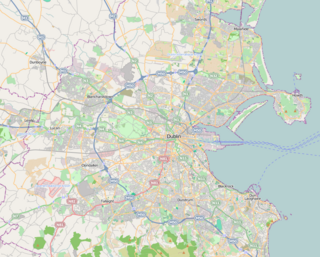 W
WIreland's Eye is a small uninhabited island off the coast of County Dublin, Ireland, situated directly north of Howth Harbour. The island is easily reached by regular tourist boats. The island is currently part of the county of Fingal, for administrative purposes, but was at one time part of the city of Dublin. The island was for centuries part of the Howth Estate, but was sold to the Tetrarch investment group in a deal announced in 2018.
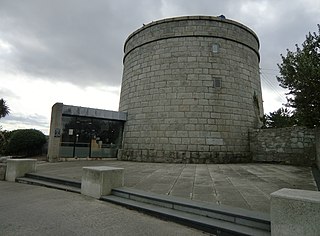 W
WThe James Joyce Tower and Museum is a Martello tower in Sandycove, Dublin, where James Joyce spent six nights in 1904. The opening scenes of his 1922 novel Ulysses take place here, and the tower is a place of pilgrimage for Joyce enthusiasts, especially on Bloomsday. Admission is free.
 W
WKells Round Tower is a round tower in Kells, County Meath in Ireland. The tower, and the high crosses nearby, are National Monuments.
 W
WKilmacduagh Monastery is a ruined abbey near the town of Gort in County Galway, Ireland. It was the birthplace of the Diocese of Kilmacduagh. It was reportedly founded by Saint Colman, son of Duagh in the 7th century, on land given him by his cousin King Guaire Aidne mac Colmáin of Connacht.
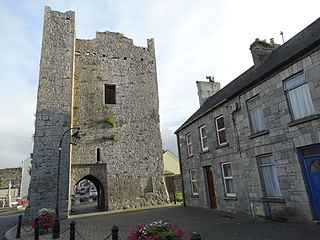 W
WKing John's Castle or King's Castle is a tower house and National Monument located in Kilmallock, Ireland.
 W
WMagdalene Tower is a landmark located at the highest point of the northern part of Drogheda, County Louth, in Ireland. All that now remains of the once important Dominican Friary is the belfry tower. Lucas de Netterville, then Archbishop of Armagh, founded the monastery in about 1224.
 W
WMoher Tower is the stone ruin of an old Napoleonic-era watchtower which stands on Hag's Head, at the southern end of the Cliffs of Moher, in County Clare, Ireland.
 W
WMonasterboice are the remains of an early Christian monastic settlement in County Louth in Ireland, north of Drogheda. The ruins are a National monument of Ireland and also give their name to the local village.
 W
WO'Brien's Tower marks the highest point of the Cliffs of Moher, a very popular tourist destination in County Clare, Ireland. It is located a short distance from the villages Doolin and Liscannor.
 W
WPortmarnock is a coastal suburban settlement in Fingal, Ireland, with significant beaches, a modest commercial core and inland residential estates, and two golf courses, including one of Ireland's best-known golf clubs.
 W
WReginald's Tower is a historic tower in Waterford, Munster, Ireland. It is located at the eastern end of the city quay. The tower has been in usage for different purposes for many centuries and is an important landmark in Waterford and an important remnant of its medieval urban defence system. It is the oldest civic building in Ireland and it is the only urban monument in Ireland to retain a Norse or Viking name.
 W
WThe Rock of Cashel, also known as Cashel of the Kings and St. Patrick's Rock, is a historic site located at Cashel, County Tipperary, Ireland.
 W
WSaint John's Tower, also called the Pigeon Tower, is a tower in Castledermot, County Kildare, Ireland. A former bell tower, it is all that remains of a medieval leper hospital and is a National Monument.
 W
WSandycove is a suburb of Dublin, Ireland. It is south east of Dún Laoghaire and Glasthule, and north west of Dalkey. It is a popular seaside resort and is well known for its bathing place, the Forty Foot, which in the past was reserved for men only but is now available for mixed bathing. The locale features in the opening of Ulysses by James Joyce.
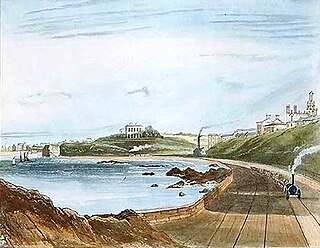 W
WSeapoint is a small seafront area between Blackrock and Monkstown in Dublin in the Dún Laoghaire–Rathdown area. It is best known for its beach and bathing areas, beside a Martello Tower on the Dublin Bay seashore. The beach currently has an International Blue flag award and a national Green flag award.
 W
WSutton is a residential suburb on the Northside of Dublin, Ireland. It occupies the tombolo which links Howth Head to the mainland, some of the lower slopes of Howth Hill, and a little of the adjacent coasts. The area lies within the jurisdiction of Fingal County Council. There is a small commercial core at the Sutton Cross road intersection.
 W
WThe U2 Tower was a cancelled landmark skyscraper which was to be constructed in Dublin. The site chosen was in the South Docklands (SODO) campshires, at the corner of Sir John Rogerson's Quay and Britain Quay, by the confluence of the River Liffey, the River Dodder, and the Grand Canal. The design announced on 12 October 2007 was by Foster and Partners. Its height had been reported at 120 metres, "well over 120 metres", and 180 metres, any of which would have made it the tallest building on the island of Ireland. The building was planned to be an apartment building, with a recording studio owned by the rock group U2 in a "pod" at the top. Construction was to begin in 2008 and end in 2011, at a cost of €200m. In October 2008, the project was cancelled because of the economic downturn at the time. Proposals to revive the plan were reported in July 2013. However, they did not come to fruition and the 79-metre, 22-storey Capital Dock development has since been built on the site.
 W
WThe Watch Tower is a tower on Manor Street in Waterford, Munster, Ireland. It is one of the six surviving towers of the city walls of Waterford. The cylindrical shape of the tower suggests that it was built in the 13th century. The arrow slit openings, or embrasures, with a gun loop at the bottom indicate that the tower was modified in the 15th or 16th century to facilitate artillery operations. The tower does not have any windows on the city side; it was built solely as a defensive structure without a secondary use as a dwelling. At the rear of the tower there are two entrances, one at ground level and another at wall-walk level.
 W
WYe Olde Hurdy Gurdy Museum of Vintage Radio is a museum of communication history based in the Martello tower in Howth, Dublin.